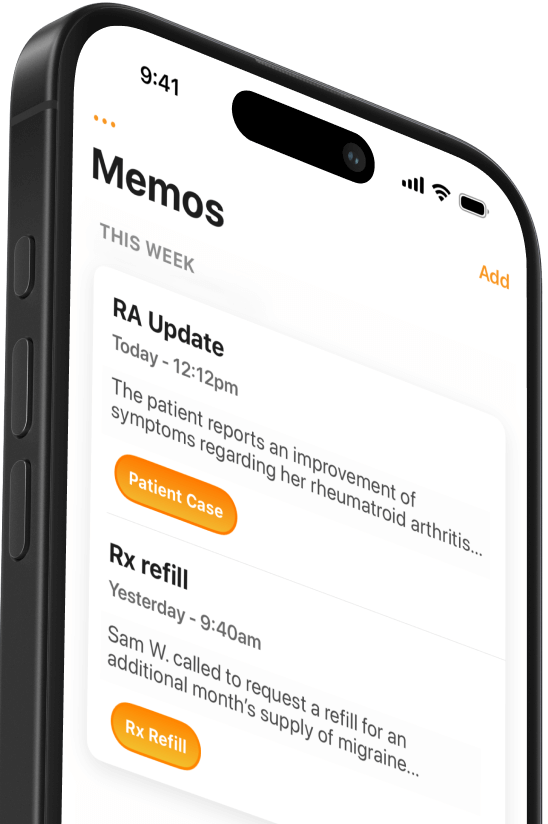How bad is physician burnout?
Physician burnout hit 47% in 2022—driven by system expectations and rising demands. It’s now a full-blown public health issue.


Popular articles
Physician burnout has skyrocketed in recent years, leading some to declare the problem a public health crisis. But as occupational burnout becomes more common, the term also gets used more loosely. What is physician burnout, what causes it, and how bad is it in 2022?
What is physician burnout?
Physician burnout is when physicians lose satisfaction and a sense of efficacy in their work. This doesn’t mean they are weak or doing anything wrong. Instead, burnout reflects a mismatch between the physician’s values or expectations and the reality of their work environment.Christina Maslach and her team first identified three diagnostic symptoms of physician burnout in the 1970s:
- Exhaustion - “I’m not sure how long I can keep going like this.” You experience physical and emotional exhaustion.
- Compassion fatigue - “I can’t believe they don't care about their health.” You are frustrated by patients and families.
- Lack of efficacy - “What’s the use?” You begin to doubt that you are making a difference.
As a physician, you could experience burnout symptoms that are emotional, physical, and behavioral. Emotional symptoms include a sense of failure, self-doubt, severe criticism, decreased interest in work or personal life, and increased anticipator anxiety.You may also have physical symptoms like tiredness that does not respond to rest, lowered immunity, sleep or appetite changes, and unusual aches and pains. Behavioral symptoms include withdrawal from community involvement, difficulty concentrating, procrastination, and negative attitudes towards patients and coworkers.If you identify several of these symptoms, you may be experiencing occupational burnout. This doesn’t mean you are weak or doing anything wrong. You are simply operating in a health care system that sets doctors up for burnout.To learn more about the signs and symptoms of physician burnout, see this article by John-Henry Pfifferling, Ph.D.
What causes physician burnout?
Health care has changed a lot in the past decade. Physicians increasingly find that the day-to-day demands of their profession are at odds with their commitment to healing and providing care.Most physicians enter practice hoping to fulfill a caring, supportive, challenging, and rewarding role. They often get pressure to see more patients in less time, limited control over how care is delivered, constant scrutiny and “quality” assessments, and increasing demands from patients. Burnout begins when physicians suffer a clash of expectations and see a severe mismatch between their actual day-to-day job and their deep-seated internal expectations.
How bad is it?
In 2022, 47% of physicians reported that they were burned out. That’s according to the 2022 Medscape Physician Burnout and Depression Report. Burnout prevalence varies by specialty and is up 5% overall from 2021.Of course, burnout is subjective, and some studies report much higher numbers. For example, a 2018 survey by The Physicians Foundation said that 78% of doctors had experienced symptoms of burnout. The same year, 42% of physicians responding to Medscape’s survey reported signs of burnout.The exact numbers matter less than realizing something needs to change.High levels of physician burnout lead to fewer physician work hours. A recent Harvard report summarizes that burnout contributes to a 1 percent reduction in physician personal work effort. The authors note that this reduction "roughly equates to losing the graduates of seven medical schools annually - before accounting for other outcomes of burnout such as early retirement or leaving the profession altogether.”As physicians lose satisfaction and a sense of efficacy in their work, it isn’t just their mental health that suffers. A health care system fueled by burned-out physicians has clear implications for the health of the American public.
Beating physician burnout
Beating burnout is about building the opposite of burnout, which is engagement. Engagement helps replace exhaustion with enthusiasm, bitterness with compassion, and anxiety with efficacy.Individual physicians and health care organizations both have a role to play in beating burnout. In their book “Banishing Burnout,” Maslach and Leitner explain how professionals experience burnout when there is a mismatch between their aspirations and reality in one or more of six areas:
- Workload - How much work do you complete on a given day? How frequent are surprising or unexpected events?
- Control - Does your participation in decisions affect your work? Are there quality leaders in upper management?
- Reward - Do you receive recognition for achievements from your supervisors? Are there opportunities for bonuses or raises?
- Community - How frequent are supportive interactions at work? Do you have close personal friendships at work?
- Fairness - Is management dedicated to giving everyone equal consideration? Are there transparent procedures for allocating rewards and promotions?
- Values - What is the potential of your work to contribute to the larger community? Do you believe your organization’s mission is meaningful?
A mismatch between preference and reality leads to dissatisfaction. While a few mismatches are common, burnout arises from significant mismatches in areas that are important to you. Individuals and health care organizations both have a role in addressing mismatches to guard against physician burnout.
Related Articles


We Get Doctors Home on Time.
Contact us
We proudly offer enterprise-ready solutions for large clinical practices and hospitals.
Whether you’re looking for a universal dictation platform or want to improve the documentation efficiency of your workforce, we’re here to help.





